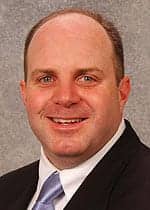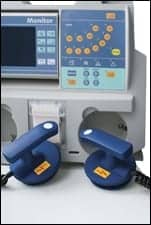New book seeks to increase the understanding and visibility of this field in hopes of recruiting allies and new hires.
By Melanie Hamilton-Basich
Healthcare technology management (HTM) is an ever-evolving technical profession with much to offer. Clinical engineering, in particular, serves to bridge the gap between engineering and medicine, using medical devices and other technology to provide patient care. It’s difficult to imagine today’s healthcare infrastructure functioning at all without professionals in this field. Yet few are aware of this linchpin of the system, sometimes even those who work in the same space. If only the world at large knew more about it.
The new book, Introduction to Clinical Engineering, seeks to take steps to change that. Publisher Elsevier sought out authors Barbara Christe, PhD, dean of Farmingdale State College’s School of Engineering Technology in Farmingdale, N.Y., and Samantha Jacques, PhD, vice president of McLaren Clinical Engineering Services to bring both academic and clinical perspectives to the discussion. This textbook shares the basics as well as the nuances of clinical engineering, and just how varied the work can be. [Watch an exclusive webcast with Drs. Christe and Jacques related to this book here.]
Drumming Up Interest
“It’s not a one-size-fits-all type of field,” says Jacques. Which she says is part of what makes it so exciting—there are so many facets to explore. “If you are hands-on, you can become a technician. If you’re more interested in the IT portion of it, you can go into, perhaps, cybersecurity.” And that’s just the tip of the iceberg. Yet clinical engineering has not gained the popularity as a profession that such opportunity would seem to warrant.
Younger people are entering the field, but not at a fast enough pace to replace the baby boomers who are retiring. In fact, many respondents to 24×7’s 2020 compensation and job satisfaction survey voiced this concern. And it bears out in the numbers. Only 14% of respondents to the survey were millennials (35 and younger), which is 3% fewer than responded to the 2019 survey.
Perhaps the biggest hurdle to recruiting new hires is a lack of visibility, both in the academic world and the clinical setting.
Whereas there are about 120 undergraduate programs across the country to train biomedical engineers, this does not extend to clinical engineering. “There is no university in the United States at the baccalaureate level that offers an undergraduate degree in clinical engineering,” opines Christe. “That missing pipeline is really a challenge for the profession.”
The American College of Clinical Engineering regularly reaches out to established biomedical engineering programs to raise awareness of clinical engineering, but it’s an uphill battle.
Christe hopes the book can serve as a way to open students’ eyes to the possibility of pursuing clinical engineering as a career path. Especially because this is an issue that also affects the availability and training of faculty, and by extension, outsiders’ perception of the entire field. Without discipline-specific academic credentials, those who go on to teach may appear not to have as high of an academic standing as those teaching other professionals.
“We lack some academic stature because of that,” explains Christe. “We are challenged to cultivate faculty with academic credentials.”
Establishing Benchmarks
Similarly, in the workplace, clinical engineering suffers from a perception problem that Jacques believes could benefit from established benchmarks across the profession. Currently, hospitals and other healthcare organizations handle HTM as a whole very differently, without shared guidelines that many other fields follow as a matter of course.
“It really challenges the way that our field is seen because we’re not necessarily uniform from site to site,” says Jacques. She wants to see standards established for a wide range of clinical engineering concerns. “That’s everything from benchmarking how many staff [members] you need, how we do our work, to how we approach things like cybersecurity,” she says.
Perhaps such changes could elevate the profession and help garner the respect it deserves, as well as attract more talent to the field.
Bringing the Female Perspective
Of those who do work in HTM, most are men—another fact highlighted in 24×7’s 2020 compensation and job satisfaction survey. While the medical field has seen an increase in women in the last several decades that has brought female representation up to around 50%, the same cannot be said for most technical fields, including clinical engineering.
“I believe that without this female perspective, we’re missing a whole set of experiences that are important to the profession,” worries Christe. But what can help alleviate this issue? While she doesn’t have an answer, she thinks raising the profile of not just the profession itself but also of highly qualified, highly capable women already within clinical engineering could help recruit more.
“I think the two of us working together to publish this book truly shows that women can do anything and that we are a force to be reckoned with, even within HTM,” Jacques adds.
Fulfilling a Unique Role
Clinical engineers fulfill a unique role within healthcare. But a major source of frustration for so many in HTM is the fact that many of the professionals in other fields who interact with them still don’t understand what they do. This includes, for example, people brought in to assist in upgrading hospital systems’ cybersecurity.
“A lot of those professionals come from a very tech-heavy, IT-heavy background. They don’t have an understanding of what clinical engineering is, what the devices are, and what our role is,” says Jacques. “And a book like this has really helped them to understand where we’re coming from and why our problems are very different than what they see in IT.”
While the authors are confident their book is a great step forward in bringing attention to their chosen profession, Christe believes more books covering clinical engineering would be beneficial to the field. “I do feel that there are quite a few more topics that could be covered in books,” she says, “and it’s really just a matter of elevating the visibility of the profession and encouraging publishers to consider these as opportunities.”
Melanie Hamilton-Basich is associate editor of 24×7 Magazine. Questions and comments can be directed to [email protected].






I agree with their perspective and hope they succeed.
I’ll be talking about clinical engineering with a group of sophomores and juniors from my high school this Wednesday. I’ll be honest with them and tell them it’s a small field, but it offers diverse opportunities, e.g., some have gone on to medical school and many into industry.
The field has historically circled the wagons and talked out what it isn’t. It’s needed a broader vision for decades but for God only knows what reason has chosen a narrowly focused identity for itself.
Consider the belief held by some some years ago that changing the name of the field to HTM would somehow turn things around. Yet here the field is, continuing to struggle to attract members.
Engineering in general is steeped in reductionist methodology that has filled a niche and served society well. My sense is there are plenty of healthcare system problems, and not simply technological, that could benefit from professionals who bring those skills to the table.
Broaden the vision and support those who want to test the boundaries.